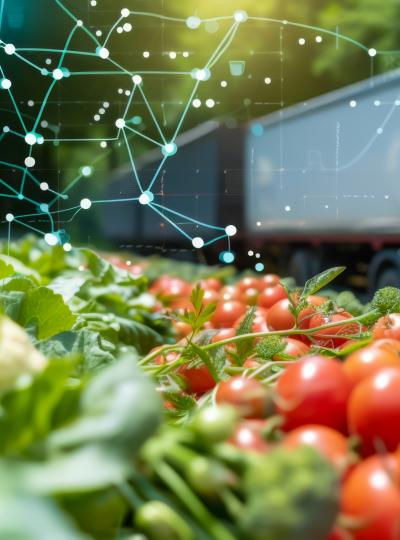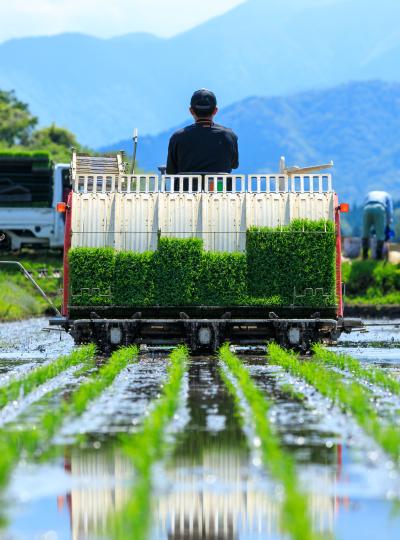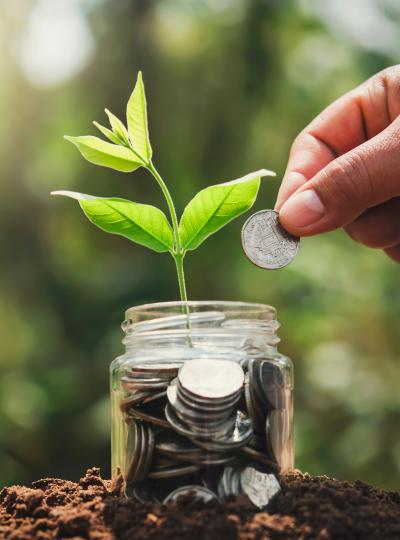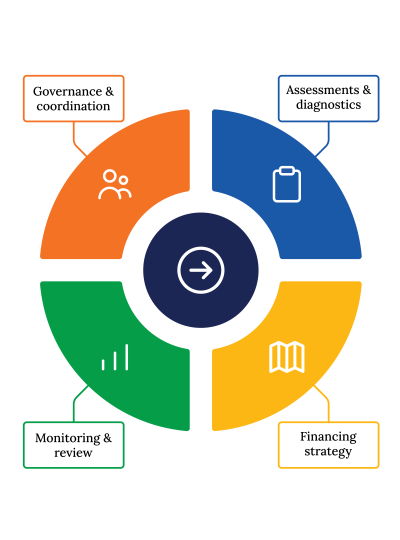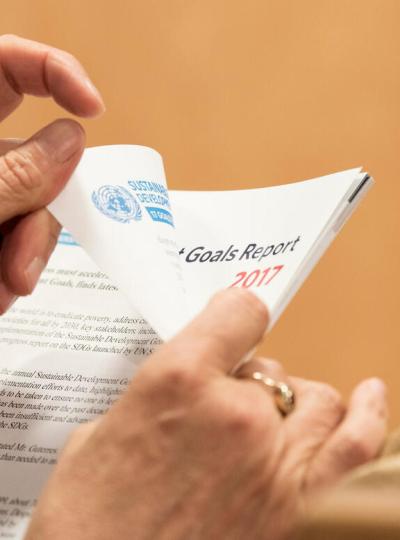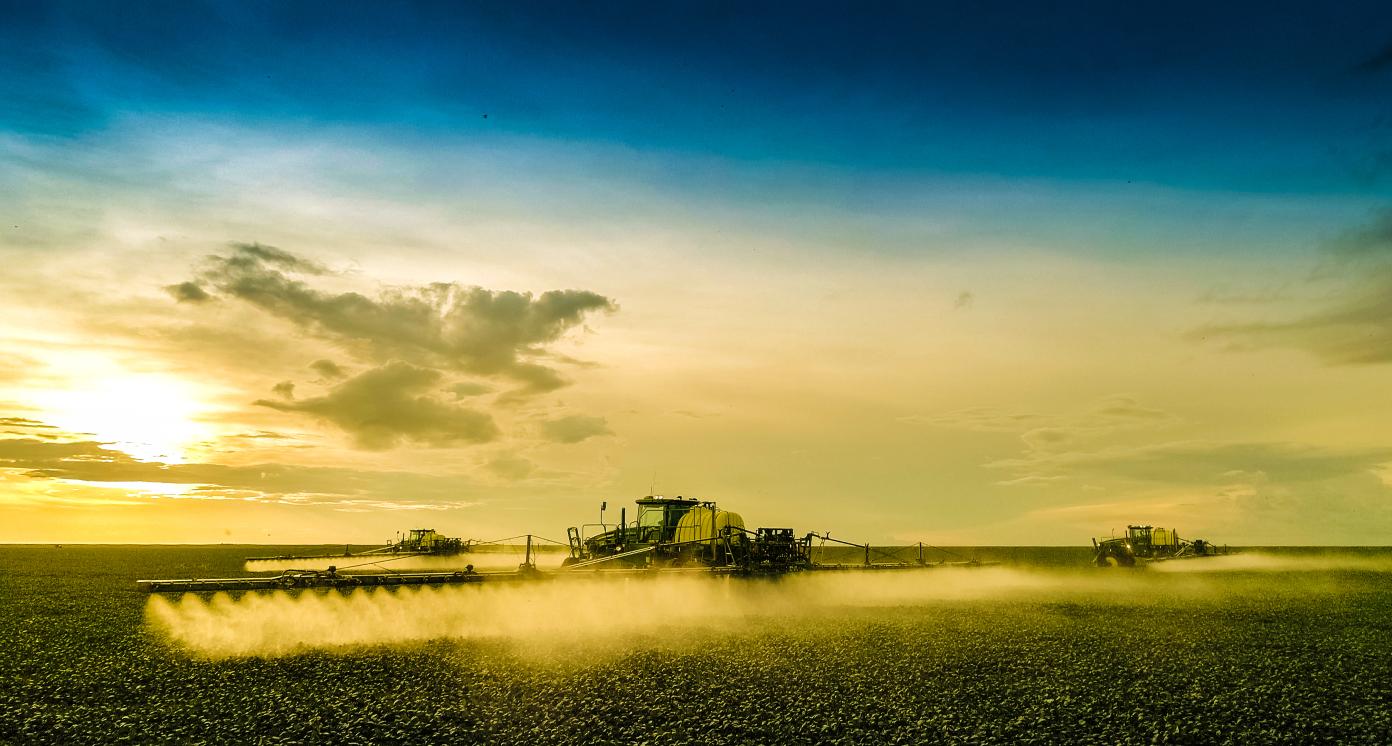Precision agriculture to improve efficiency of producers
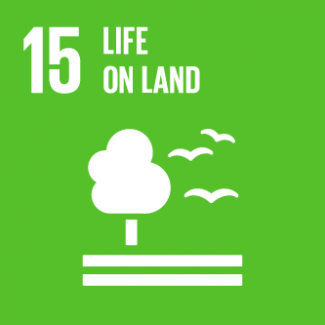
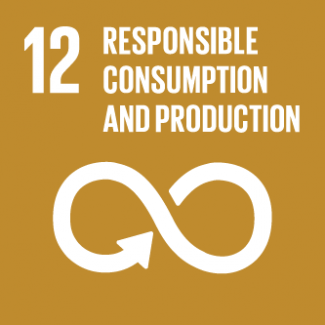
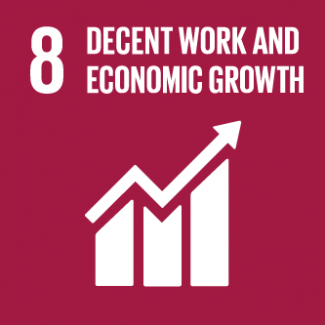
Business Model Description
A disaggregated business model with emphasis on infrastructure and process management to improve the efficiency and competitiveness of the producer.
Expected Impact
Promote precision agriculture practices environmentally friendly while improving women's opportunities.
How is this information gathered?
Investment opportunities with potential to contribute to sustainable development are based on country-level SDG Investor Maps.
Disclaimer
UNDP, the Private Finance for the SDGs, and their affiliates (collectively “UNDP”) do not seek or solicit investment for programmes, projects, or opportunities described on this site (collectively “Programmes”) or any other Programmes, and nothing on this page should constitute a solicitation for investment. The actors listed on this site are not partners of UNDP, and their inclusion should not be construed as an endorsement or recommendation by UNDP for any relationship or investment.
The descriptions on this page are provided for informational purposes only. Only companies and enterprises that appear under the case study tab have been validated and vetted through UNDP programmes such as the Growth Stage Impact Ventures (GSIV), Business Call to Action (BCtA), or through other UN agencies. Even then, under no circumstances should their appearance on this website be construed as an endorsement for any relationship or investment. UNDP assumes no liability for investment losses directly or indirectly resulting from recommendations made, implied, or inferred by its research. Likewise, UNDP assumes no claim to investment gains directly or indirectly resulting from trading profits, investment management, or advisory fees obtained by following investment recommendations made, implied, or inferred by its research.
Investment involves risk, and all investments should be made with the supervision of a professional investment manager or advisor. The materials on the website are not an offer to sell or a solicitation of an offer to buy any investment, security, or commodity, nor shall any security be offered or sold to any person, in any jurisdiction in which such offer would be unlawful under the securities laws of such jurisdiction.
Country & Regions
- Costa Rica: Quesada, San Carlos
Sector Classification
Food and Beverage
Development need
Consolidate this pole as a cultural and agricultural innovation center for the Northern Huetar Region.
Policy Priority
Promote a resilient system with the potential to adapt to climate change.
Gender inequalities and marginalization issues
Average percentage of women of working age unemployed (4.03 potential gender index).
Investment opportunities introduction
GAM Connector and Chorotega Triangle.
Key bottlenecks introduction
242.11 km of roads in poor condition, 394.94 square km with access problems to energy substations, 338.53 square km without 4G connectivity, 160.38 km with gaps in social development.
Technology
Development need
Make use of R&D to transform the agricultural sector, sustainably improving productivity.
Policy Priority
Make use of the knowledge-based economy to mitigate and improve soil management.
Gender inequalities and marginalization issues
Promote R&D activities that improve the competitiveness of women's agricultural production activities.
Investment opportunities introduction
roots and tubers, pineapple, rice, sugar cane, and ornamental plants.
Key bottlenecks introduction
Limited knowledge about the advantages of precision agriculture.
Professional and Commercial Services
Pipeline Opportunity
Precision agriculture to improve efficiency of producers
A disaggregated business model with emphasis on infrastructure and process management to improve the efficiency and competitiveness of the producer.
Business Case
Market Size and Environment
In 2021 USD 526 million of exported Pineapple. In 2017, sugarcane supply was USD 109 million (20).
Pineapple exports grew 12.9% (2017/18). Sugarcane production grew 1.25% (2005/08) (20, 21).
2,915,628 tons produced in 2014 of pineapple, 148,149 tons produced in 2008 of Roots (18, 21).
Pineapple is one of Costa Rica's three main export products in 2019 (22).
As of 2018, sugar industry exports represented 1.3% of the country's total exports. The sector covered 60,000 hectares planted (21).
Rice exports made by the country in the period 2018-2019 were 7 975 metric tons. In this period, 53% of exports went to Guatemala, 31% to El Salvador, and 13% to Nicaragua (11).
The Roots and Tubers sector is of great socio-economic importance for the Northern Huetar Region. There is a great experience accumulated for more than 25 years in the establishment, production, and marketing of products. It is an activity that concentrates majorly small and medium producers. The crops that make up this productive sector are cassava, ginger, yam, and others (17).
Like the national production, the Northern Huetar Region has shown accelerated growth in the export of non-traditional products in which ornamental plants (mainly marginatas, aralias, and pleomelle) stand out (17).
Indicative Return
Pineapple, Sugar, Rice, Roots have 77.4%, 80%, 3.5%, 10.8% of yield per ha (16, 18).
The use of technology can reduce marking costs by 17% and improve productivity by 23% (14).
Benefits of adopting precision agriculture will vary from one agricultural enterprise to another. Each one should evaluate possible benefits in the medium term by reducing input requirements and improving productivity (13). Short-term profitability is higher in higher value-added crops than in crops with little processing, and in production factors controllable with dosage techniques (15).
Short-term profitability is higher in higher value-added crops than in crops with little processing, and it is higher the more production factors we are able to control with variable dosage techniques (15).
Investment Timeframe
Short Term (0–5 years)
Each pineapple cycle, between planting and harvesting, can last from 16 to 18 months.
Each sugarcane cycle ranges from 12 to 24 months.
Each rice cycle varies from 95 days to almost 250 days.
It varies according to the species. Each ginger cycle varies from 9 to 10 months, sweet potato from 2 to 4 months, yam from 9 to 10 months, and cassava from 10 to 14 months.
Ornamental plants: It varies according to the species.
Ticket Size
The cost ranges from USD 3.57 to 17.85 per ha for elementary techniques, adding almost USD 47.6 per ha for more advanced solutions (13). Small-scale implementation is possible (13). A large-scale implementation requires USD 10.000 investment.
Market Risks & Scale Obstacles
Business - Supply Chain Constraints
Specialized training
Impact Case
Sustainable Development Need
Address 621.62 sq. km of priority cropland for decarbonization in this development pole.
Gender & Marginalisation
To revitalize the agriculture practiced by the women of this pole to become a source of income, using low-cost or free technology on small production scales.
Expected Development Outcome
To increase the Social Development Index (SDI) in this development pole.
Gender & Marginalisation
To decrease the gaps in the Potential Gender Index in this development pole.
Primary SDGs addressed

15.3.1 Proportion of land that is degraded over total land area
Carbon emissions from pole exports: 3.03%.
By 2050, foster highly efficient agri-food systems that generate low-carbon goods for export and local consumption.
Secondary SDGs addressed


Directly impacted stakeholders
People
Gender inequality and/or marginalization
Planet
Corporates
Indirectly impacted stakeholders
People
Gender inequality and/or marginalization
Planet
Corporates
Outcome Risks
Overexploitation of soils by increasing yields per hectare.
The reduced need for labor hours per hectare could reduce labor requirements.
Impact Risks
Guarantee continuous follow-up and training for producers to complete the process successfully and do not give up.
Impact Classification
What
Increase in yields and agricultural productivity.
Who
Smallholder farmers and exporters.
Risk
Fear of change with new technologies because of lack of knowledge.
Impact Thesis
Promote precision agriculture practices environmentally friendly while improving women's opportunities.
Enabling Environment
Policy Environment
Territorial Economic Strategy for an Inclusive and Decarbonized Economy 2020-2050 in Costa Rica: Transforming agriculture through R&D&I towards technological innovations (1).
National Decarbonization Plan 2018-2050: Promoting efficient agri-food systems that generate low-carbon goods for export and local low-carbon consumption.
Strategic Intervention Plan 2019-2022: Promote sustainable and competitive production through innovation, access to technology, application of good production and manufacturing practices, value addition, and associativity (4).
PIEG: Women's land tenure and private property are fundamental factors in the fair and equitable distribution of wealth (3).
Financial Environment
Financial incentives: Of the funds placed by the Development Banking System in 2019, 45.09% went to agricultural activities. In turn, in the Rural Credit System -INDER- placed ₡719.6 million current (USD 1.4 million) (16).
Fiscal incentives: Law 7210, Free Trade Zone Regime Law; Law 7092, Income Tax Law, which gives differentiated treatment to MSMEs and SMEs.
Other incentives: AGRINNOVACION 4.0 seeks to improve agricultural productivity and sustainability; International ornamental plant fairs with Esencial Costa Rica.
Regulatory Environment
Law 7779, Law of Use, Management and Conservation of Soil: Promote the implementation and control of improved practices in the systems of use that avoid erosion or other forms of degradation of the soil resource.
Law 7064, Law for the Promotion of Agricultural Production and MAG: Promote the production of agricultural goods by encouraging producers to increase production.
Export Guide: Exporting a product or service involves a series of procedures such as exporter registration, Technical notes or exit permits, Certification of origin (6).
Marketplace Participants
Private Sector
EARTH University, Indigo Drones Company, IICA, El Colono Agropecuario S.A., Compañía Agrícola Industrial PROPICA S.A, Regional Agricultural Centers, Chamber of root and tuber exporters.
Government
Instituto Tecnológico de Costa Rica (TEC), Ministerio de Agricultura y Ganadería (MAG), INDER, MEIC, COMEX.
Target Locations
Costa Rica: Quesada, San Carlos
References
- (1) MIDEPLAN (2021) Estrategia Económica Territorial para una Economía Inclusiva y Descarbonizada 2020-2050 en Costa Rica
- (2) Gobierno de Costa Rica (2018) Plan Nacional de Descarbonización 2018-2050.
- (3) INAMU (2018) Política Nacional para la Igualdad Efectiva entre Mujeres y Hombres 2018-2030, PIEG
- (4) MAG (2018) Plan de intervenciones estratégicas 2019-2022.
- (5) Presidencia (2021) EXPORTACIÓN DE PLANTAS ORNAMENTALES CRECE EN UN 31% ESTE AÑO. Comunicado oficial.
- (6) PROCOMER (2021) Guía de exportación. Trámites y requisitos.
- (7) INEC (2015) VI Censo Nacional Agropecuario. CARACTERÍSTICAS DE LAS FINCAS Y DE LAS PERSONAS PRODUCTORAS.
- (8) INEC (2021) Anuario estadístico
- (9) Asamblea de Costa Rica (1998) Ley 7779, Ley de Uso, Manejo y Conservación de Suelos.
- (10) Asamblea de Costa Rica (1997) Ley 7064, Ley de Fomento a la Producción Agropecuaria y MAG
- (11) CONARROZ (2019) INFORME ESTADÍSTICO PERÍODO 2018/2019. Unidad de Control Estadístico Arrocero
- (12) INEC (2015) VI Censo Nacional Agropecuario RESULTADOS GENERALES
- (13) Satorra, J (2018) ¿Es rentable la Agricultura de Precisión? New Ag International
- (14) IDAE (2010) Ahorro y eficiencia energética en la agricultura de precisión. Gobierno de España.
- (15) Valero, U (2016) Agricultura de precisión: conceptos y situación actual. Universidad Politécnica de Madrid
- (16) SEPSA (2008) REGIÓN HUETAR NORTE OFERTA EXPORTADA ACTUAL Y OFERTA POTENCIAL DE PRODUCTOS AGROPECUARIOS ALTERNATIVOS.
- (17) MAG (2007) Caracterización y plan de acción para el desarrollo de la agrocadena de Raíces y Tubérculos Tropicales en la región Huetar Norte.
- (18) Morales, L (2018) Producción y rendimiento del cultivo de la piña (ananas comosus) en Costa Rica, periodo 1984-2014. Revista Agronegocios, 4(2). TEC
- (19) MAG (2007) Caracterización Cadena Local Plantas Ornamentales. Dirección Regional Huetar Norte
- (20) BCCR (2021). Exportaciones FOB Totales por Producto. Matriz de datos.
- (21) LAICA (2020). Biblioteca Virtual Matriz de Datos.
- (22) COMEX. Exportaciones totales 2007-2021. Esportaciones de Bienes Cifras Globales.








